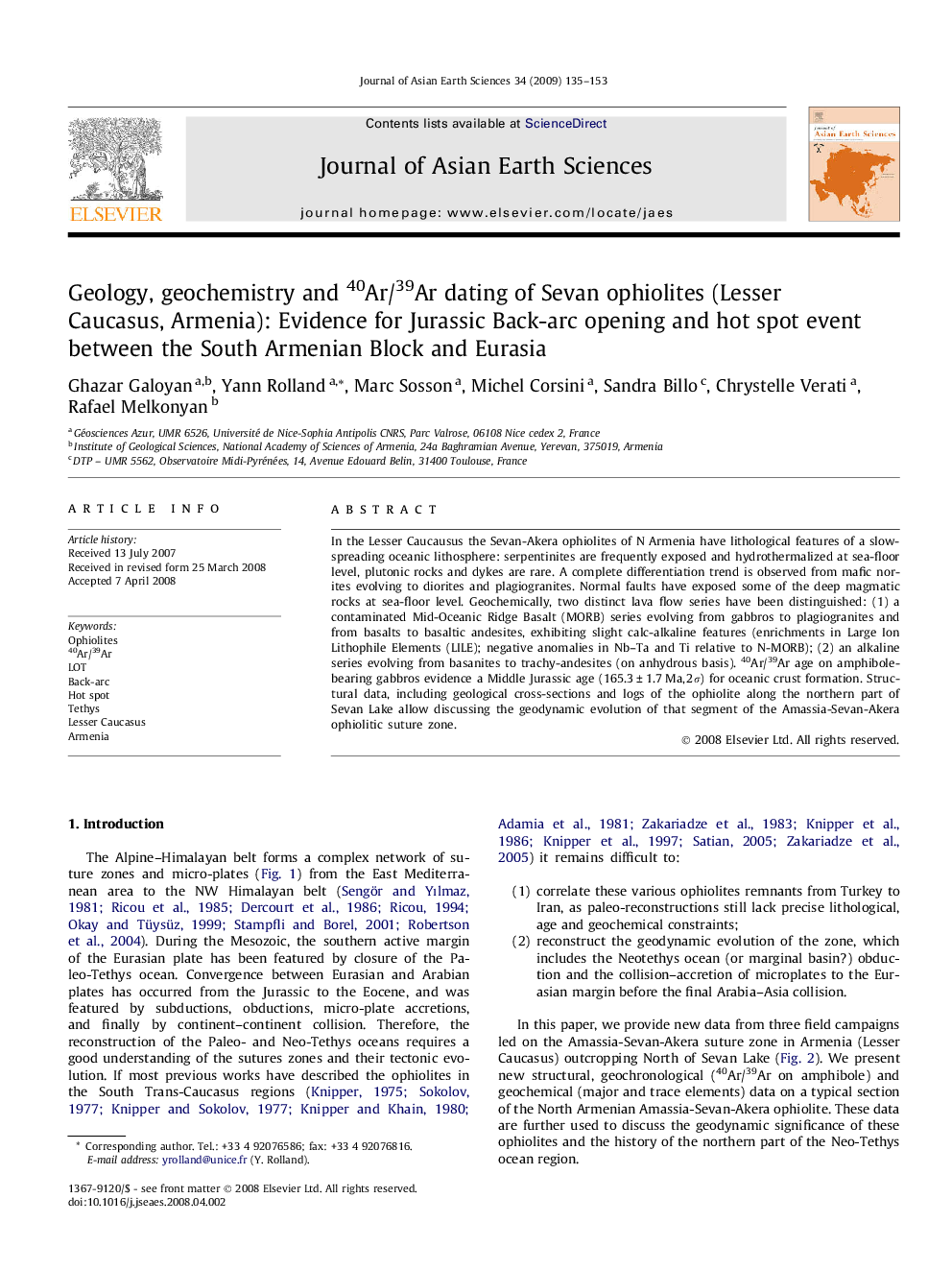| Article ID | Journal | Published Year | Pages | File Type |
|---|---|---|---|---|
| 4732277 | Journal of Asian Earth Sciences | 2009 | 19 Pages |
In the Lesser Caucausus the Sevan-Akera ophiolites of N Armenia have lithological features of a slow-spreading oceanic lithosphere: serpentinites are frequently exposed and hydrothermalized at sea-floor level, plutonic rocks and dykes are rare. A complete differentiation trend is observed from mafic norites evolving to diorites and plagiogranites. Normal faults have exposed some of the deep magmatic rocks at sea-floor level. Geochemically, two distinct lava flow series have been distinguished: (1) a contaminated Mid-Oceanic Ridge Basalt (MORB) series evolving from gabbros to plagiogranites and from basalts to basaltic andesites, exhibiting slight calc-alkaline features (enrichments in Large Ion Lithophile Elements (LILE); negative anomalies in Nb–Ta and Ti relative to N-MORB); (2) an alkaline series evolving from basanites to trachy-andesites (on anhydrous basis). 40Ar/39Ar age on amphibole-bearing gabbros evidence a Middle Jurassic age (165.3 ± 1.7 Ma, 2σ) for oceanic crust formation. Structural data, including geological cross-sections and logs of the ophiolite along the northern part of Sevan Lake allow discussing the geodynamic evolution of that segment of the Amassia-Sevan-Akera ophiolitic suture zone.
